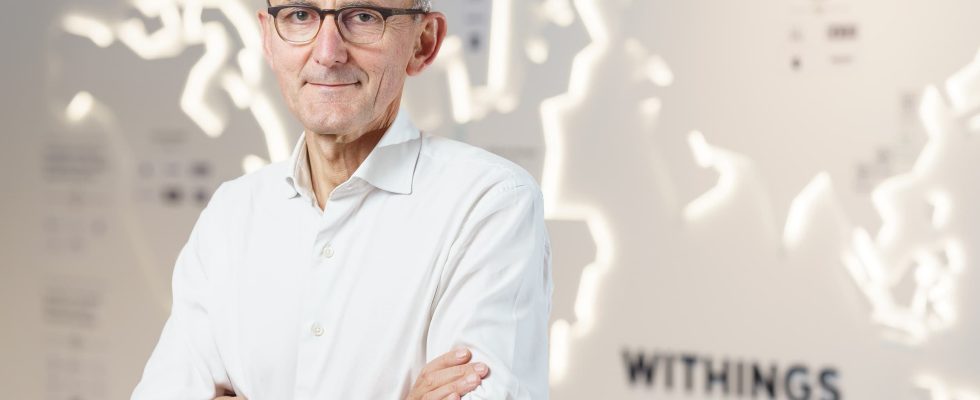This grim reaper doesn’t make any noise but it is of great concern to the World Health Organization (WHO). Chronic diseases – diabetes, cardiovascular problems, etc. – are booming around the world. And they already cause three quarters of deaths each year. For the veteran of connected health, Eric Carreel, founder and president of the French Withings, technology is a major ally in stemming this surge.
What can technology do for health?
There is an explosion of chronic diseases in the world. Diseases linked to poor diet, lack of physical activity and disturbed sleep which require patients to be accompanied throughout their lives. But it is not by telling the patient, during a one-off consultation, to eat less salt and drink less that we will have any impact. Changing a habit takes at least three years. And it doesn’t happen in a linear way. There are inevitably relapses, moments of discouragement, where the person tends to move away from caregivers.
The strength of connected devices is that patients continue to step on their scale, put on their watch and sleep in their bed in these moments. Our sensors can therefore continue to analyze what they pass through. Overall, connected health objects have two functions: one as a coach, by transmitting data to the patient which will motivate them to change their habits, and the other as a guardian angel, since beyond certain thresholds of risk, they can alert the patient, or even put them in contact with health professionals.
The healthcare sector appears to be transforming digitally much more slowly than others. For what ?
The difficulty is that health systems are very different from one country to another. In France, the system provides the vast majority of support. In the United States, there are a lot of private insurances and patients who move from one to another. They have a more competitive and less efficient system. The explosion of chronic diseases is strong there, but it is not the only country affected: we also observe it in India, Brazil, and the Middle East. Europe is fortunate to be late, but the curve is also growing strongly there.
How do regulators view connected health objects?
Medical products are highly regulated. The system is organized to avoid errors, which makes the sector more resistant to change, but also has obvious utility in terms of security. For four or five years, there has been a real awareness of the usefulness of technology in this sector. Last year, the practice of remote patient monitoring was validated (Editor’s note: it is now reimbursed by Social Security). This is a very big step forward. We can now offer real-life support to the patient. We must now involve the entire medical world in this new way of doing things, it will be progressive.
In 2016, you sold Withings to Nokia. In 2018, you buy it back from him. Why this about-face?
At the time of the sale, the healthcare world in France was not yet ready for these transformations. Things were difficult, which worried our investors. But I was frustrated, because I felt like we were at the beginning of something and we hadn’t gotten to the end. When two years later, Nokia wanted to separate from Withings, I had the opportunity to come back. Today, we are close to the equilibrium threshold.
What is BeamO, this thermometer of the future that you are unveiling this year at CES 2024 and for which medical certification is in progress? And where is the U-Scan, this urine analysis device that you presented at last year’s edition?
The U-Scan will launch later this year. BeamO, for its part, combines the taking of four different measurements in a single product. The temperature, of course, but also the oxygen saturation level. An important piece of data, as we saw with Covid. This is also one of the first things that firefighters look at when they take care of a person who has fallen to the ground: is they well oxygenated? The BeamO also allows you to very simply perform an electrocardiogram, analyzed by our atrial fibrillation detection algorithm. Finally, it offers stethoscope recording. It can therefore be transmitted to a doctor during a teleconsultation.
When Withings was created in 2008, there were few connected health players. Today, Gafam is investing in this sector, notably Apple. This confirms your analysis of market potential, but it now places you against otherwise powerful competitors.
Apple and Google are carrying out very important work in health and say, in fact, very explicitly that it is a major issue for them. Withings, however, has something to offer against them. Of course, in smartwatches we are small compared to Apple. But we have a rather unique ability to gather precise measurements in quantity, with our wide range of devices. Our connected bathroom scales, for example, measure much more than weight, but also data that can track certain complications of diabetes or others linked to cardiac decompensation. There is no real equivalent to these products on the market. The same goes for our Sleep Analyzer, this sleep sensor to place under your mattress. Studies have shown that it is better at detecting sleep apnea than some reference devices because it analyzes your nights every day.
In connected health, who is the customer you are targeting: the patient or public administrations?
There are three levels of prevention: primary prevention before becoming ill, secondary, when there are warning signals, and tertiary prevention, supporting people who are already ill. We have worked a lot on primary prevention, targeting people who are aware of the importance of their health and keen to preserve it. We are now also tackling tertiary prevention. We reach out to healthcare providers to help them support their patients, particularly people who are leaving hospitalization and who need to be monitored to avoid a relapse.
.
